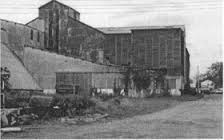 |
In an earlier study, published January 2013 in Proceedings of the National Academy of Sciences, the UCLA team discovered a link between Parkinson's and the pesticide benomyl, a fungicide that has been banned by the U.S. Environmental Protection Agency. That study found that benomyl prevents the enzyme aldehyde dehydrogenase (ALDH) from converting aldehydes — organic compounds that are highly toxic to dopamine cells in the brain — into less toxic agents, thereby contributing to the risk of Parkinson's.
For the current study, UCLA researchers tested a number of additional pesticides and found 11 that also inhibit ALDH and increase the risk of Parkinson's — and at levels much lower than they are currently being used, said the study's lead author, Jeff Bronstein, a professor of neurology and director of the movement disorders program at UCLA.
Bronstein said the team also found that people with a common genetic variant of the ALDH2 gene are particularly sensitive to the effects of ALDH-inhibiting pesticides and are two to six times more likely to develop Parkinson's when exposed to these pesticides than those without the variant.
The results of the new epidemiological study appear Feb. 5 in the online issue of Neurology, the medical journal of the American Academy of Neurology.
"We were very surprised that so many pesticides inhibited ALDH and at quite low concentrations — concentrations that were way below what was needed for the pesticides to do their job," Bronstein said. "These pesticides are pretty ubiquitous and can be found on our food supply. They are used in parks and golf courses and in pest control inside buildings and homes. So this significantly broadens the number of people at risk."
The study compared 360 patients with Parkinson's disease in three agriculture-heavy Central California counties and 816 people from the same area who did not have Parkinson's. The researchers focused their analyses on individuals with ambient exposures to pesticides at work and at home, using information from the California Department of Pesticide Regulation.
In the previous PNAS study, Bronstein and his team had determined the mechanism that leads to increased risk. Exposure to pesticides starts a cascade of cellular events, preventing ALDH from keeping a lid on the aldehyde DOPAL, a toxin that naturally occurs in the brain. When ALDH does not detoxify DOPAL sufficiently, it accumulates, damages neurons and increases an individual's risk of developing Parkinson's.
"ALDH inhibition appears to be an important mechanism by which these environmental toxins contribute to Parkinson's pathogenesis, especially in genetically vulnerable individuals," said study author Beate Ritz, a professor of epidemiology at UCLA's Fielding School of Public Health. "This suggests several potential interventions to reduce Parkinson's occurrence or to slow its progression."
In the current study, the research team developed a lab test to determine which pesticides inhibited ALDH. They then found that those participants in the epidemiologic study who had a genetic variant in the ALDH gene were at increased risk of Parkinson's when exposed to these pesticides. Just having the variant alone, however, did not increase risk of the disease, Bronstein noted.
"This report provides evidence for the relevance of ALDH inhibition in Parkinson's disease pathogenesis, identifies pesticides that should be avoided to reduce the risk of developing Parkinson's disease and suggests that therapies modulating ALDH enzyme activity or otherwise eliminating toxic aldehydes should be developed and tested to potentially reduce Parkinson's disease occurrence or slow its progression, particularly for patients exposed to pesticides," the study states.
The study was funded in part by the National Institute of Environmental Health Sciences (P01ES016732, R01ES010544, 5R21ES16446-2 and U54ES012078), the National Institute of Neurological Disorders and Stroke (NS038367), the Veterans Administration Healthcare System, the Michael J. Fox Foundation, the Levine Foundation, the Parkinson Alliance, the National Defense Science and Engineering Graduate Fellowship and the Ruth L. Kirschstein Institutional National Research Service Award in Molecular Toxicology (T32ES015457).
